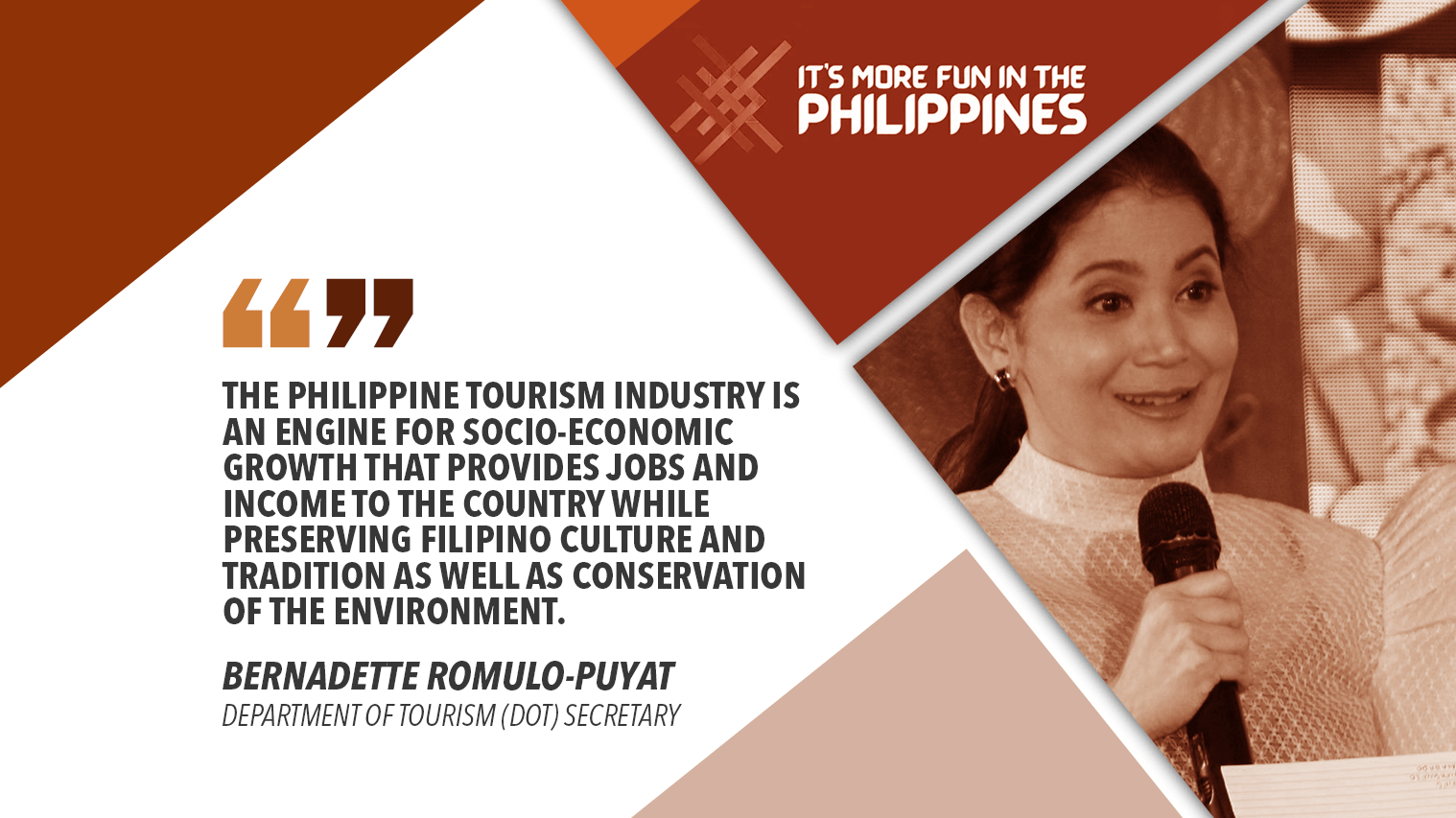The tourism industry’s contribution to the country’s economy reached another milestone in 2018 with its 12.7 percent input to the Philippines’ Gross Domestic Product (GDP), which is 0.5% higher than in 2017, according to data released by the Philippine Statistics Authority (PSA).
The contribution was made considering the closure for six months of Boracay island, one of the country’s major tourist destinations, to enable massive cleanup and rehabilitation works.
The Tourism Direct Gross Value Added (TDGVA), an indicator that measures the value added of the tourism industry, amounted to P2.2 trillion, which is an increase of 14.3 percent from the 2017 TDGVA of P1.9 trillion.
Employment in the tourism industry also rose to an estimated 5.4 million, 1.8 percent higher than the 5.3 million in the previous year.
Employment in the tourism industry rose to 5.4 million.
The number of domestic tourists reached 110 million, an increase of 14.1 percent from the previous year’s figure of 96.4 million. This exceeds the 89.2 million target in 2022 stated in the National Tourism Development Plan (NTDP).
The domestic tourism expenditure also jumped by 21 percent at P3.2 trillion, compared to the P2.6trillion in 2017.
Based on the Philippine Tourism Satellite Accounts (PTSA) results, at least 2 million poor people benefited from the robust tourism growth compared to original targets from 2016 to 2018 in line with the NTDP’s strategic direction on sustainability and inclusive growth.
Tourism Secretary Bernadette Romulo-Puyat attributed the achievements in the tourism industry to a holistic and convergent government.
“The ‘Build, Build, Build’ program of the administration has greatly improved infrastructure and transport connectivity, while the ease of doing business, coupled with a facilitative environment for investments, has boosted both visitor and investor confidence in Philippine tourism,” Romulo-Puyat said.
“The ‘Build, Build, Build’ program of the administration has greatly improved infrastructure and transport connectivity.”
“Moreover, these numbers show that the Philippine tourism industry is sustainable; it is an engine for socio-economic growth that provides jobs and income to the country while preserving Filipino culture and tradition as well as conservation of the environment,” the tourism chief added.

